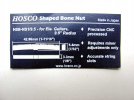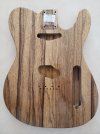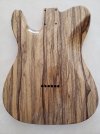Looking good, patience is key.
Be careful not to associate Micro Mesh numbers with the actual sandpaper grit (Micro Mesh 1500 = 400 grit sandpaper, Micro Mesh 4,000 = 1500 grit sandpaper). There are some charts online but I haven't found any complete through Micro Mesh 12,000.
It looks like you're getting a decent sheen on the finish, seeing the light reflections on the radius- I'm seeing a glossy-semi-gloss. To achieve a high gloss, you will need to buff once the finish is completely cured (up to 30 days). If you wet sand to 6,000 or even 4,000 grit sandpaper, a light rubbing compound or mirror glaze followed by a swirl mark remover compound could be all you'll need.
Should you decide to buff the finish, I've used the Buff-N-Shine 3" buffing kit with an electric drill and like the control it offered. I've polished table tops (faux marble) and cars with larger 8 and 9 inch pads and wouldn't consider anything larger than 5.5 inch for a guitar body. As the diameter gets larger, the speed of the outer edge of the pad increases dramatically, making it easier to burn through the finish.




